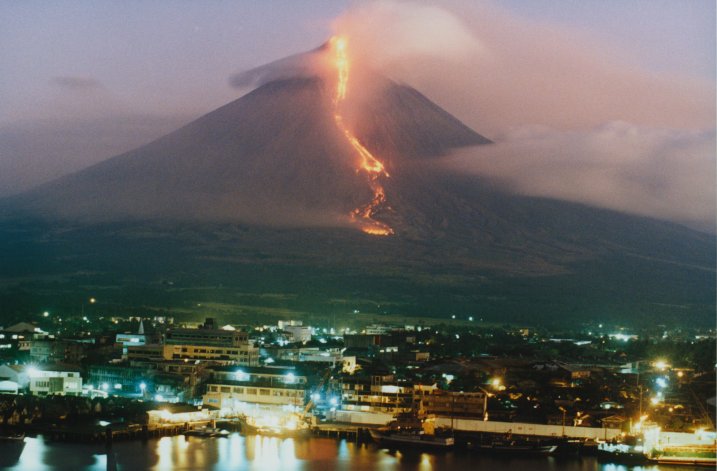
Mount Mayon, the most active volcano in the Philippines has started showing signs of an imminent eruption, as it spewed fountains of lava and massive ash plumes on Monday night and even on Tuesday morning. According to latest updates, more than 27,000 people have been evacuated after Mount Mayon exhibited elevated seismic unrest, and summit explosions followed by the spread of lava and ash.
The Philippine Institute of Volcanology and Seismology revealed that lava fountains reached up to 700 meters above Mount Mayon's crater, and ash plumes rose up to the sky for about three kilometers.
On last week, Philippine Government increased Mayon's alert level to four on a scale of five which indicates that a dangerous explosion may take place within the coming few hours or days. The authorities also expanded the danger zone to eight kilometers. The public has been warned to stay vigilant and not to enter the danger zone. Pilots have been asked to avoid flying close to the volcanic ash, and as per latest updates, several flights have been canceled due to adverse sky conditions.
"The evacuation has been ongoing since Mount Mayon started showing signs of instability. Because of the volcanic activity, the danger zone was extended from six kilometers to eight kilometers. People staying in the area are now ordered to be evacuated," told Mark Dambal, information officer at the Philippines' Office of Civil Defense to CNN.
According to reports, volcanic ash has started falling in dozens of towns in Albay and the Camarines Sur province. Due to the thick ash fall, visibility has been drastically obscured in these towns.
Mount Mayon is one of the most popular tourist destinations in the Philippines. It has erupted more than 50 times in the last 500 years, and sometimes, the explosions were very deadly. The most destructive eruption occurred in 1814. 1200 people lost their lives in the aftermath. In 2013, five climbers lost their lives after they started trekking the mountain despite eruption warnings.









